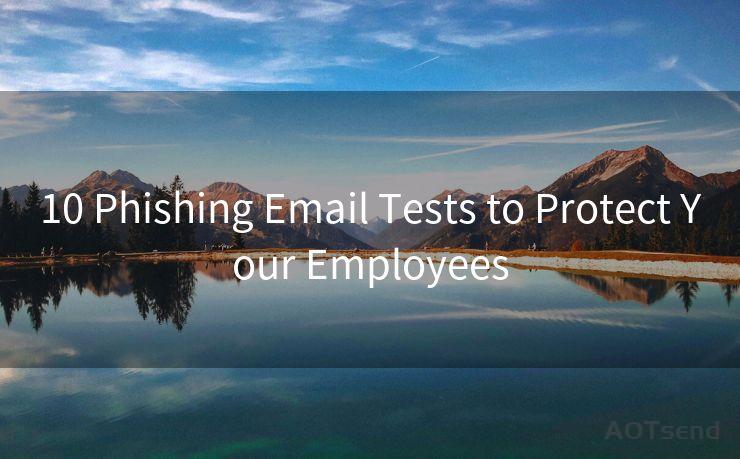10 Phishing Email Tests to Protect Your Employees




In the digital age, phishing emails have become a common threat to organizations. These malicious emails often disguise themselves as legitimate communications, tricking unsuspecting employees into divulging sensitive information or downloading harmful attachments. To combat this menace, it's crucial to educate your team on how to identify and avoid phishing scams. Here are 10 phishing email tests that can help protect your employees:
1. Check the Sender's Email Address
One of the first things to look for in a suspicious email is the sender's address. Phishing emails often use addresses that look similar to legitimate ones but with slight variations. Train your employees to carefully examine the email address and report any that seem suspicious.
2. Analyze the Greeting and Salutation
Phishing emails often use generic greetings like "Dear User" or "Dear Customer". Encourage your team to be cautious of such emails, as legitimate businesses usually personalize their communications.
3. Scrutinize the Email Body
Phishing emails often contain urgent language or threats to encourage immediate action. Teach your employees to be wary of such tactics and to never respond to threats or demands without first verifying their authenticity.
4. Look for Spelling and Grammatical Errors
Phishing emails are often riddled with spelling and grammatical errors. While this is not always a sure sign of a scam, it's a red flag that should prompt further investigation.
5. Beware of Suspicious Links
Hovering over links in suspicious emails can often reveal their true destination. Train your employees to always check the link address before clicking and to avoid clicking on any links that seem suspicious.
6. Don't Download Unknown Attachments
Attachments in phishing emails can contain malware. Instruct your team to never download attachments from unknown or suspicious sources.
🔔🔔🔔
【AOTsend Email API】:AOTsend is a Managed Email Service for sending transactional emails. Support Email Types: reminders, authentication, confirmations, notifications, verification codes, invoices, password resets, account activations, billing statements, two-factor authentication (2FA), and one-time passwords (OTP) emails, etc. $0.28 per 1000 Emails. 99% Delivery, 98% Inbox Rate.
You might be interested in:
Why did we start the AOTsend project, Brand Story?
What is a Managed Email API, How it Works?
Best 25+ Email Marketing Platforms (Authority,Keywords&Traffic Comparison)
Best 24+ Email Marketing Service (Price, Pros&Cons Comparison)
Email APIs vs SMTP: How they Works, Any Difference?
7. Verify the Information Requested
If an email asks for sensitive information like passwords or credit card details, it's likely a scam. Encourage your employees to verify such requests through official channels before responding.

8. Use Anti-Phishing Tools
Utilize anti-phishing software and browser plugins to add an extra layer of protection. These tools can help identify and block known phishing sites.
9. Report Suspicious Emails
Encourage your employees to report any suspicious emails to your IT department or security team for further investigation.
10. Stay Updated on the Latest Scams
Regularly inform your team about the latest phishing scams and how to identify them. This will help them stay vigilant and reduce the chances of falling victim to these scams.
By following these 10 phishing email tests, you can significantly reduce the risk of your employees falling victim to these malicious emails. Remember, education and awareness are key to keeping your team and your organization safe from cyber threats. Keep these tests in mind, and always stay vigilant!




Scan the QR code to access on your mobile device.
Copyright notice: This article is published by AotSend. Reproduction requires attribution.
Article Link:https://www.mailwot.com/p1036.html



